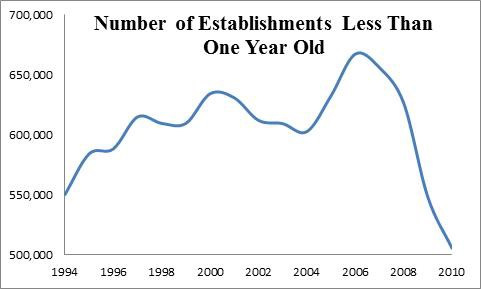In 2012, a team of ex-Google employees decided to launch their own company: a venture capital firm of sorts with a twist called Upstart. While traditional venture capital structures give funding to companies, Upstart’s financial backers monetarily support individuals. All they ask for in return is a share of future income.

What do these budding entrepreneurs put that money toward? Some invest it directly into their companies. Others toward improving their tech knowledge through coding classes. But many funnel it into the primary credit constraint facing twentysomethings today: student debt.
Collectively, Americans owe $1.2 trillion in college loans — that’s three times Google’s valuation and over two-thirds of the U.S. national debt. Ten years ago, student debt amounted to $253 billion, a hefty number to be sure, but just one quarter of what is owed today. In some ways, this sharp rise in debt is a positive indicator of the increase in college attendance and graduation: Since 2003, there has been a 30 percent increase in attendance at full-time postsecondary institutions. Concurrent with this increase in higher education is a decrease in entrepreneurship; the number of newly incorporated businesses decreased by about one-sixth during that same 10-year period.

Source: Bureau of Labor Statistics.
Of course, causation is not correlation, and the downswing in new businesses coincides neatly with the downswing in our economy. But the increase in student debt and the decrease in entrepreneurship are likely connected, a connection that inspired the team behind Upstart.
Why is student debt linked to the decrease in entrepreneurship? First, consider the case of a college graduate with no student loans to her name. With no looming specter of debt, this 22-year-old likely feels like she can embrace the risk inherent in starting a business. Sure, she may have to sleep on his friend’s futon and exist off of ramen noodles, but she can handle the initial struggle of starting a business. Her business might not hit the jackpot — in fact, new business survival statistics show that chances are it won’t. But the good news is that while she is pursuing her new venture — pitching her idea to venture capitalists and angels — she faces zero dollars in monthly interest payments.
But the story above isn’t typical. Seven out of 10 students graduate to an average of $29,400 in debt, with interest rates that hover around four percent. Suddenly, that college grad’s view after leaving the ivory tower has changed. Taking a risk in starting a business no longer seems as realistic, since debt payments will continue to accrue even as his company’s cash flow remains at zero. The potential entrepreneur’s primary goal has subtly shifted from the desire to invest in a career he loves to the desire to make enough money to make his debt payments. In other words, he is more likely to start working a desk job before shopping around his newest business idea. The grad’s relationship with financial risk has changed, and while Upstart is one solution to the problem, it certainly can’t address every student’s debt.
This is why flipping the university and starting something — a business, an organization or a club — while still at your university, and while your debt payments are still several years off, is so important. Building the confidence and the foundation that you can start something from scratch and make it work can give you the edge that’s needed to put financial risk in perspective, balancing that risk with your ability to start a business that has real value. Being an entrepreneur is about seeking out and embracing risk. At 20, with a safety net of professors, peers and other university officials, taking an entrepreneurial risk isn’t actually that risky. At 22, with debt payments kicking in, you have a lot to lose.
Does the U.S. need to rethink the way it structures college payments? Yes, definitely: One unintended consequence of the increase in federal loans is that universities may react by increasing tuition. It’s also not ideal that student loans make up the one kind of debt courts rarely let you include in bankruptcy filings. But these kinds of structural changes aren’t going to happen any time soon.
So, embrace what you have control over and start thinking of your university as your very own laboratory to build your farm league of relationships and experiences that you can call on when you launch your startup. Tomorrow, you’ll likely graduate to mounting debt and a stagnant economy. Today, your campus is there for you to use as a fertile ground where you can plant your ideas and build your virtual board of advisors. By planning the seeds today, you will be building the confidence necessary to put college debt in perspective, and you will be honoring the Chinese proverb, “He who plants a seed, plants a hope.”